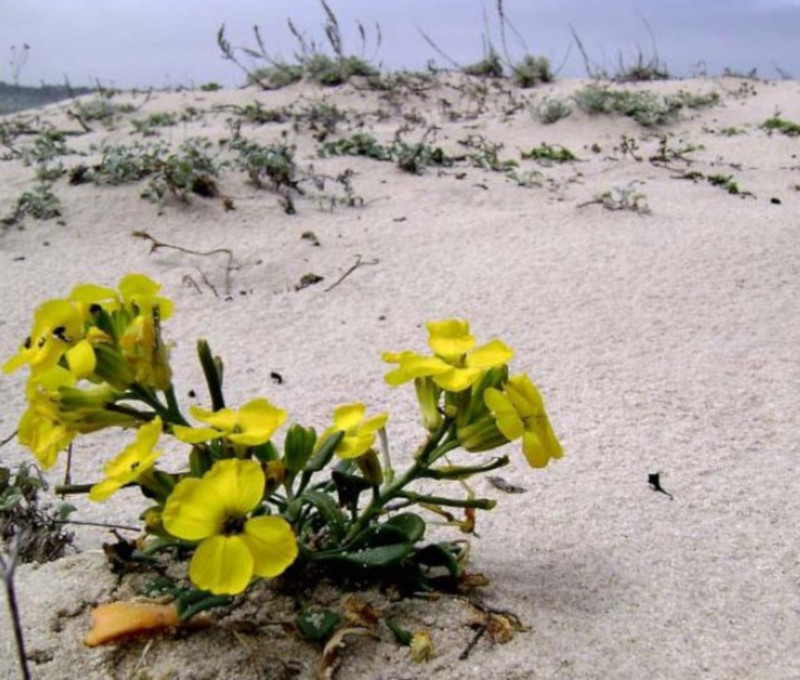Menzies’ Wallflower Facts
- Most notably, the term Menzies’ Wallflower serves as the common name for an extremely rare variety of flora. This lovely small plant currently appears to have an incredibly small range. In point of act, it appears to be endemic to only four known small individual locations in the world.
- However, botanists currently recognize a total of four varieties of the remarkable species. But, quite unfortunately, all known varieties of the lovely plant presently officially list as Endangered with the IUCN. This lamentable status appears on the organizations’ Red List of Threatened Species.
- The flowering plant bears the name of Archibald Menzies, a highly respected Scottish botanist. He became the first scientist to officially recognize the lovely plant. This fortunate action occurred in the late 18th century. However, it appears to have been quite rare even at the time of its discovery.
- Today, all known clusters of the precious Menzies’ Wallflower exist within a small 8 mi (12.8 km) stretch extending along the coast. This remains the same approximate territory the flower inhabited at the time of its discovery more than two centuries ago. However, it’s now highly threatened by climate change.
Related Articles
Menzies’ Wallflower Physical Description
Firstly, the amazing Menzies’ Wallflower evolved the remarkable ability to develop as either a perennial or biennial. In addition, the lovely plant also has the distinct physical characteristics of a particular short herb. That holds true due to the fact that this this marvel of Nature bears a remarkably strong resemblance to a mustard plant.
Despite its other impressive qualities, it remains a small species. The truly fascinating plant most commonly attains a height of only 6 in (15 cm). The plentiful leaves of the species generally develop comparatively long and straight in shape. These also align themselves along the stem and have a covering of small, fine hairs.
In addition, the flowers of the Menzies’ Wallflower appear at the top of the short stalk, and usually in somewhat dense clusters. These also display a bright yellow color, and the petals themselves have a highly rounded shape. Also, the small fruits produced by the plant grow relatively long and protrude almost straight out from the short stem.
- Kingdom: Plantae
- Phylum: Angiosperms
- Class: Eudicots
- Order: Brassicales
- Family: Brassicaceae
- Genus: Erysimum
- Species: E. menziesii
Menzies’ Wallflower Distribution, Habitat, and Ecology
Quite sadly, the marvelous Menzies’ Wallflower only appears to inhabit a tiny portion of the world. More precisely, that limited region consists of the state of California, in the United States, in North America. Furthermore, it only seems to grow in very specialized sand dune habitats along the edge of the coastline.
This extraordinary and lovely flowering plant generally produces copious quantities of seeds. Regretfully, however, propagation rarely succeeds in new specimens. In fact, roughly 98% of all seedlings fail to survive the first year. For the moment, the exact reason for such a terribly low success rate remains unknown.
Fortunately, one factor is working in favor of the plant. That holds true due to the fact that this quite rare and unique plant currently enjoys legal protection. In point of fact, that’s true under both local and federal law in all known locations. Unfortunately, though, it faces a number of threats directly tied to its particular habitat.
Yet, these threats include more than the understandable threat now being posed by climate change. Other dangers faced by the Menzies’ Wallflower include such things as unintentional trampling by hikers, off-road vehicles, and sand mining. Finally, the presence of invasive species within its natural habitat range also helps place it in peril.
Species Sharing Its Range
Check out our other articles on 7 Amazing Australian Species, Tiger Rattlesnake, Dallol Hydrothermal Field, Boojum Tree, Bee Hummingbird, Japanese Spider Crab, North Atlantic Right Whale

